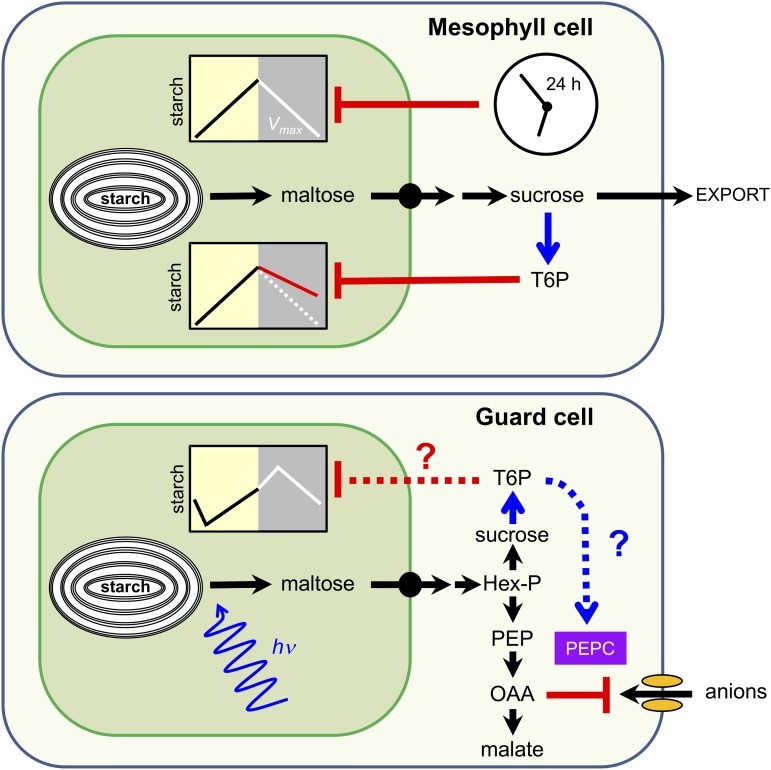Figure 2.
Regulation of starch breakdown in mesophyll cells (top) and guard cells (bottom). Degradation of transitory starch in mesophyll cells is regulated by the circadian clock and by the Suc-signaling metabolite trehalose 6-phosphate (T6P). In a model proposed by Martins et al. (2013), the maximum allowable rate of starch degradation (Vmax) is set by the circadian clock to ensure that starch reserves are not exhausted before dawn, while the actual rate of starch degradation is linked to demand for Suc via inhibition by T6P. In guard cells, blue light (hv) is a trigger for rapid starch degradation at the beginning of the day. It is not known if starch breakdown in guard cells is regulated by the circadian clock or if it is sensitive to inhibition by T6P. However, T6P might stimulate the synthesis of malate from starch via posttranslational activation of PEPC. Known and hypothetical regulatory mechanisms are represented by solid and dashed lines, respectively; blue, activation; red, inhibition. Hex-P, Hexose phosphate; PEP, phosphoenolpyruvate; OAA, oxaloacetate. (Figure modified from Martins et al. [2013].)

